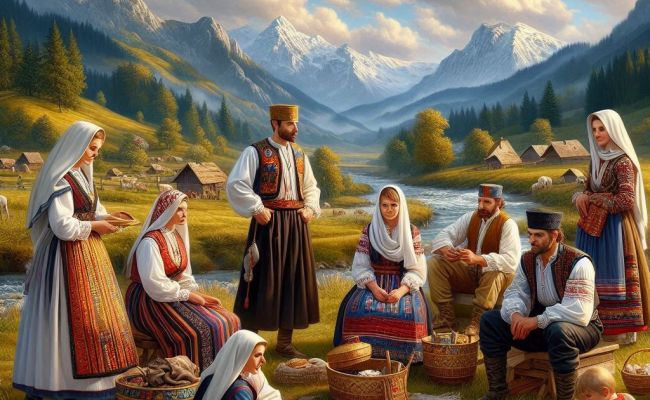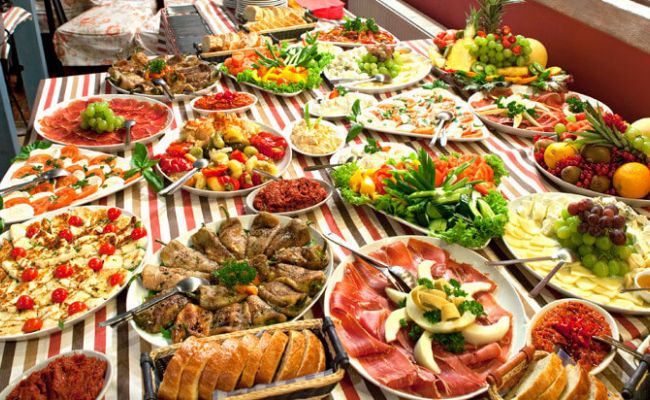Serbia, located in the heart of the Balkans, is a country rich in history,
culture, and natural splendor. Serbia provides a mix of urban excitement
and rural tranquility, with dynamic cities like Belgrade, famed for its
nightlife and historical attractions, and calm landscapes in its
countryside and national parks.
Culture in Ancient and Old Serbia
Located at the crossroads of Central and Southeastern Europe, ancient
and medieval Serbia boasted a diverse cultural heritage, shaped by
numerous civilizations and historical events. The Serbian Principality,
and later the Kingdom of Serbia, emerged during this time, with notable
cultural achievements such as the founding of Orthodox Christianity as
the national religion in the ninth century. Serbian medieval art and
architecture flourished, typified by monasteries like Studenica and Žiča,
covered with murals and icons that remain iconic emblems of Serbia
spiritual and cultural identity. The era also saw the rise of literature and
epic poetry, particularly the works of Stefan Nemanja and his son, Saint
Sava, who played important roles in creating Serbian religious and
cultural traditions. Encounters with Byzantine, Hungarian, and Ottoman
cultures shaped Serbia’s cultural landscape throughout this time, leaving
a lasting legacy that still permeates present-day Serbian national
identity.
Serbia People
Serbia and neighboring Montenegro have a predominantly South Slavic
population. Between the 5th and 7th centuries CE, Slavic tribes arrived
in the region from the north, where they encountered Illyrian-speaking
people. Although the Slavs assimilated a considerable number of

Illyrians, many of them kept their unique language and customs in the
complex hills and valleys of modern-day Albania.
Cleavages between southern Slav tribes occurred over time, particularly
following the creation of the north-south in the fourth century CE, which divided the Roman Empire into Eastern and western halves. This divide later served as the foundation for the
Christian church organization. Missionaries from Rome converted
Slavic tribes in the west to Roman Catholicism (these tribal groups
became the forefathers of the Slovenes and Croatians), while
missionaries from Constantinople converted Serbs and Montenegrins to
Eastern Orthodoxy.
Ethnicity and regional diversity of Serbia people
Ethnic Serbs make up approximately 83% of Serbia’s population overall.
Significant minority communities in the country, including Hungarians,
Bosniaks, Romani, Croats, Slovaks, and Albanians, contribute to its
ethnic variety. Each of these groups adds to Serbia’s diversified
landscape with its traditions, dialects, and customs.
Serbia also has significant regional variety. Recognized for its multi-
ethnic character, Vojvodina in the north includes a sizable Hungarian
minority and influences from Central European traditions. This region is
known for its rich plains and thriving agricultural traditions. Central
Serbia, which includes the capital Belgrade, is a cultural melting pot that
serves as the country’s political and cultural core, combining ancient
traditions with modern urban life. Southern Serbia, with its attractive
scenery and ancient communities, has developed a distinct cultural
identity influenced by Ottoman heritage.
Overall, Serbian ethnic and regional variety reflects its complicated past
and crucial geographical location at the crossroads of Europe and the
Balkans, resulting in a rich tapestry of cultural and social traditions.
Serbia Language
Unlike Romanians and Hungarians, Serbs do not have a distinct
language distinguishing them from their neighbors. They speak
roughly the same language as Croats, Bosniaks, and Montenegrins;
however, their pronunciation and vocabulary differ. Depending on the speaker’s ethnicity, Serbo-Croatian is known today as Serbian, Croatian, Bosnian, or Montenegrin. Serbian distinguishes itself from Bosnian and
Croatian in writing. The Orthodox missionary brothers Saints Cyril and
Methodius devised a modified version of the Cyrillic alphabet for
Serbian. Like other Roman Catholic countries, Croatian uses the Latin
script for writing. Once written in Arabic, Bosnian has now transitioned
to the Latin alphabet. Serbian uses three letters, whereas Montenegrins
use both Cyrillic and Latin. The Hungarian populace speaks Uralic,
which has no connection to Serbian.
Religion In Serbia
Despite less than one-tenth of the population attending church during the
Soviet era, Serbia’s Eastern Orthodox Christian tradition distinguishes its
national identity. Throughout history, the autocephalous Serbian
Orthodox Church has seen itself as the protector of Serbian national
interests. Throughout the Ottoman Empire, it fought a protracted battle
against the influence of Greek clergy stationed in Constantinople. The
The Ottoman regime suppressed the Serbian church between 1766 and 1832
due to its nationalist activities. Roman Catholic and Calvinist Protestant
groups divide Hungarians in Vojvodina.
Cuisine Of Serbia
Even the most urbane Serbs adore traditional cuisine and the Skadarlija
district in the center of Belgrade is brimming with restaurants serving
national delicacies and international fare. Serbian cuisine reflects
its Byzantine and Ottoman roots and it shares many similarities with
Greek and Turkish cuisine.

The national cuisine, ćevapčići, consists of small, folded patties of mixed ground meats that are strongly seasoned and grilled. Other popular meals are sarma (stuffed cabbage), podvarak (roast pork with sauerkraut), and moussaka (a casserole of minced meat, eggs, and potatoes). Domestically produced wines and slivovitz (plum brandy) typically accompany the food.
